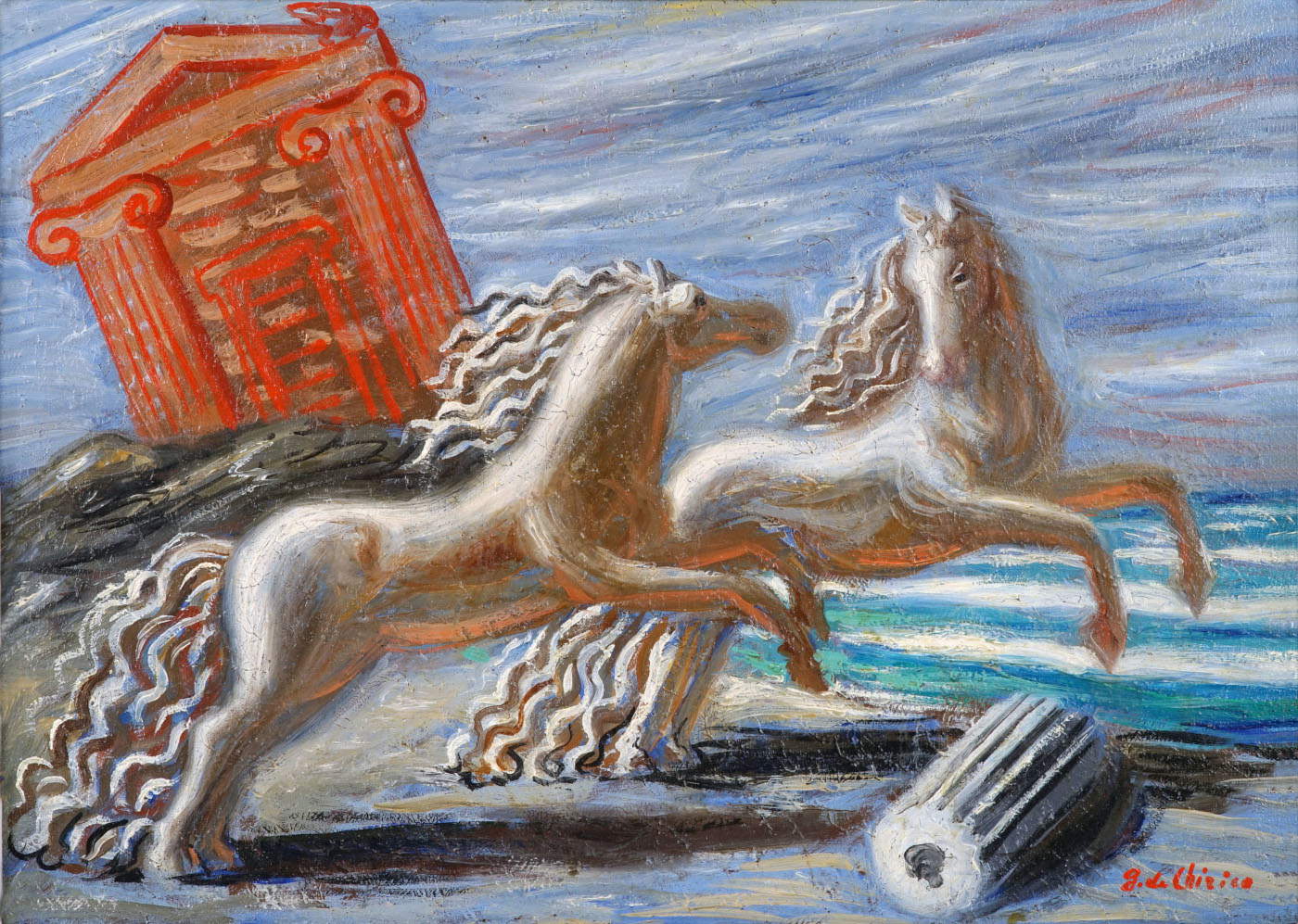De Chirico and his relationship with Surrealism: an exhibition in Turin explores the theme
From Nov. 8, 2024, to March 2, 2025, the Accorsi-Ometto Museum of Decorative Arts in Turin hosts the exhibition Giorgio de Chirico: 1924, curated by Victoria Noel-Johnson. The exhibition focuses on events around 1924, the year of the publication of French critic André Breton’s Manifeste du surréalisme: Focusing on the time span from 1921 to 1928, the exhibition aims to highlight the importance of de Chirico’s role in the birth and development of Surrealism, whose centenary falls this year, as well as to analyze his complicated relationship with André Breton, the movement’s founder, the French poet Paul Éluard and his wife Gala (who later married Salvador Dali). Breton, who discovered de Chirico’s metaphysical painting in 1916 in Paris through the poet-critic Guillaume Apollinaire, began corresponding with the artist in late 1921, involving Éluard and his wife Gala. Between 1921 and 1925, de Chirico wrote over twenty-five letters and postcards to them. While de Chirico and Éluard met in Rome during the winter of 1923-1924, Breton and de Chirico did not meet for the first time until late October 1924 in Paris. In that year, an intense frequentation began, documented by the famous group photo taken by Man Ray at the Bureau de recherches surréalistes (October 1924), taken a few days after the publication of Breton’s manifesto.
The relationship between de Chirico and the Surrealist group, marked by a series of professional collaborations and friendships, soured rapidly during 1925, with a final break in 1926. The climax was reached with Breton’s public declaration that de Chirico had ’died’ artistically in 1918. For the Surrealists, his sudden change that had taken place since 1919 in favor of Classicism and the great masters was inexplicable and inferior to the brilliant splendor of his early Metaphysical painting of the 1910s, a criticism partially explained by a conflict of interests: the Surrealists owned most of de Chirico’s works from the early Metaphysical period (1910-1918). In fact, the intellectual sophistication, technical excellence, and creative innovation of de Chirico’s works created during the 1921-1928 period demonstrate the exact opposite from what Breton claimed. Visitors will find in the exhibition a rich selection of works made during the painter’s stay in Italy between Rome and Florence (datable 1921- 1925), followed by his second stay in Paris (datable late 1925 - 1928). Despite the backdrop of growing controversy and criticism from the Surrealists, the public will have the opportunity to discover how de Chirico continued to create new series with innovative subjects, such as Furniture in a Room, Horses by the Sea, Gladiators, Archaeologists and Trophies. Also featured are Combat of Gladiators (Fin de combat), 1927 and Chevaux devant la mer (1927-1928).
The painter approached Classicism in an obvious way from 1919 to 1925: this is evident in Lucretia, c. 1921, Self-Portrait with Mother, 1922, and Self-Portrait, 1925, from which his knowledge of and deep respect for fifteenth-century Italian painting shines through. The element of his continuity of the metaphysical work of the 1910s is illustrated, for example, by Still Life with Watermelon and Armor (1922), Thelobster (Still Life with Lobster and Cast) (1922), or My Room in Olympus (1927), where, in a fantastical and enigmatic atmosphere, objects seemingly randomly juxtaposed next to each other appear. Or the Trophy Facters (1926-1928), a clear evolution of de Chirico’s early metaphysical period, in which elements of the past and present coexist: ancient figures, fragments of columns, stylized flames, profiles of horses, the tympanum of a classical building, fused together by three mannequin characters intent on the construction of the iconic “totem-trophy.” In addition, works such as Temple in a Room and The Painter’s Family, both 1926, or Thèbes, 1928, illustrate the innovative development of certain themes and subjects of the 1910s such as Ferrara Interiors and Mannequins.
The exhibition in Turin displays more than seventy works, including some fifty paintings and works on paper by Giorgio de Chirico, alongside some twenty portraits of Surrealist artists, poets and writers, photographed by Man Ray and Lee Miller, all from private collections or important museums and institutions, such as GNAM in Rome, MART in Trento, theUnicredit Art Collection in Milan, the Boschi Di Stefano House Museum in Milan, the Rodolfo Siviero House Museum in Florence, the Carlo Bilotti Museum - Villa Borghese Orangery in Rome, the Matteucci Institute in Viareggio, the Bibliotheca Hertziana - Max Planck Institute in Rome, and the Lee Miller Archives in East Sussex, UK. Thanks to the prestigious loan from the Bibliothèque littéraire Jacques Doucet in Paris, the de Chirico - Breton correspondence (1921-1925) will also be exhibited for the first time, including the hitherto little-known 1924 letter in which the artist proposed that Breton create the first replica of a work from the Metaphysical period, that of The Disquieting Muses of 1918.
For info: www.fondazioneaccorsi-ometto.it
Hours: Tuesdays, Wednesdays and Fridays from 10 a.m. to 6 p.m.; Thursdays from 10 a.m. to 8 p.m.; Saturdays, Sundays and holidays from 10 a.m. to 7 p.m. Closed Mondays.
Image: Giorgio de Chirico, Ancient Horses (1927; oil on canvas, 32.5 x 45 cm; Private collection) © Giorgio de Chirico by SIAE 2024
 |
| De Chirico and his relationship with Surrealism: an exhibition in Turin explores the theme |
Warning: the translation into English of the original Italian article was created using automatic tools. We undertake to review all articles, but we do not guarantee the total absence of inaccuracies in the translation due to the program. You can find the original by clicking on the ITA button. If you find any mistake,please contact us.



























